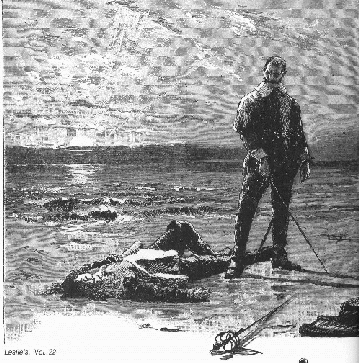
| Research Information |Training Materials| Links|Papers | Period Manuals | About the Author |
|---|
 |
| Elizabethan
Fencing and the Art of Defence
The Arte of Defence was studied and taught by masters in the late 15th and 16th Centuries. The most famous of the teachers typically came from Italy. Until the advent of the smallsword and the French schools of fence, the Italians and to a lesser degree the Spanish, enjoyed the role of the most sought after teachers of the Arte of Defence. This is not to say that earlier fencing schools did not exist. The Germans had fine schools and some of the oldest existant fencing manuals come from Germany. I have very little on the German schools and would appreciate any information in this area. The English at the end of the 16th Century followed the continental fencers in taking on the use of the rapier. In defense of English technique, George Silver published a treatise called the Paradoxes of Defence. This treatise was used to espouse the use of the English weapons and to downplay the use of the rapier. Silver hated the Italians and Spanish and made sure that his readers knew that these styles were more dangerous for the user than good English practices. He also wrote a treatise on his Paradoxes called Brief Instructions. Two Italian Elizabethan Masters of note were Saviolo and Di Grassi. Saviolo' s works cover not only his view on fencing mechanics but also honor. Di Grassi in the author's opinion is one of the finer manuals translated to English in this time period. Although Di Grassi predates the Elizabethan period proper, his manual which was orginally published in 1570 was translated into English in the late Elizabethan period. There is a move now to compile electronic copies of existing early fencing manuals. Some translation is also being done. As I obtain manuals (or links to manuals) I will add them into the period manuals section. Dana Groff, another scholar of defense and researcher in period fencing has information available for the scholar of the art. His reference points to a number of period manuals. This treatise is intended as a guide and help for those that wish to take part in rapier play as a combat sport as well as theatrics. A number of groups study and practice period swordplay. A list of some of these groups is provided below. These pages are a historically accurate work that anyone studying the Art of Defence should be able to use. Although the primary focus of this site is rapier combat, you will also find information on other combat styles such as longsword, backsword and other styles. You will note that I spell defense with a C (defence) in many places. This is to reflect the spelling of the word used during the Elizabethan period and that this art is based on fencing... Please follow the links at the top of the page to various areas of interest.  |
|
|
|
All of the works contained on this site are covered by copyright. I give open permission for anyone to link to this site but reserve the right for these materials to be used in any other fashion. If you wish to use passages in other scholarly works you may do so with proper citation. If you would like to copy whole sections you must contact me in advance. |